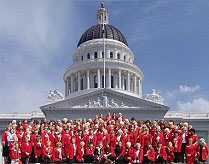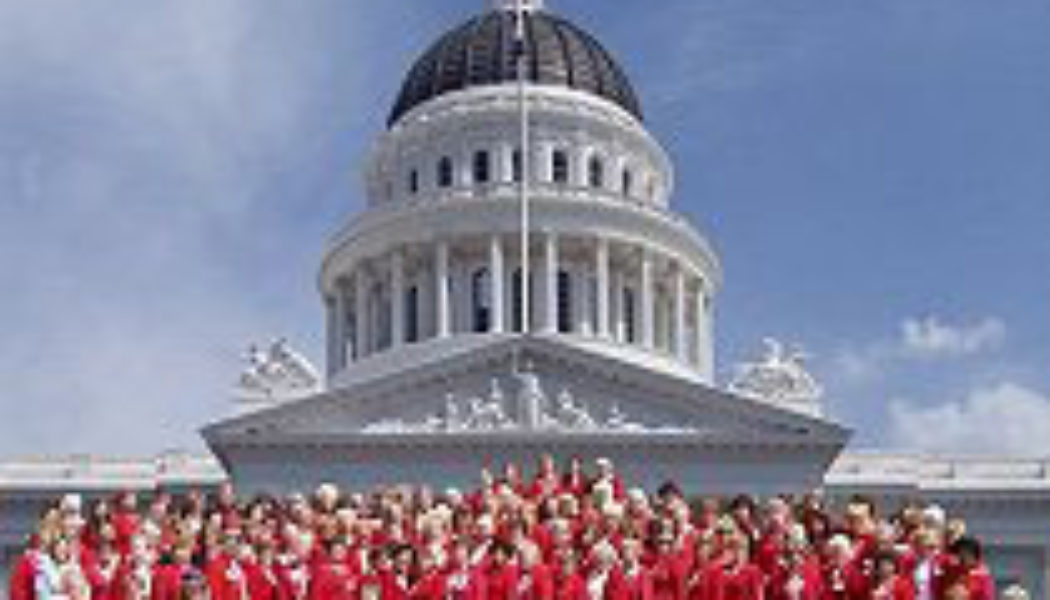
Allison Olson, CFRW Advocate
Capitol Update
Tuesday, February 04, 2020
California Federation of Republican Women
Sue Blair, President
NO on Prop 13: The $15 Billion Schools Facilities Bond
Our state’s primary election ballots were mailed out yesterday! This is the first election in our state’s history that is ENTIRELY vote-by-mail. Although, you don’t have to return your ballot by mail. On February 18th, voting centers will open up across the state in which you can walk in and return your ballot, or you can ask to fill out a provisional ballot there. But do not wait to cast your vote! It is important to return your ballot as soon as you can, and track your ballot with the given tracking number through your county Elections Office. The longer you wait, the more likely you can lose your ballot, have to vote provisionally, and then it is less likely your vote will be counted. We also want to show early support for our Republican candidates as well as opposition to Prop 13!
Prop 13 on this March 3rd Primary Ballot is not what we would consider the original Prop 13. Although, it does include potential property tax increases. This will confuse the voters! The state Attorney General and the Secretary of State number the ballot measures. In our state, we typically cycle through props 1-99, although not always. It is entirely possible the Attorney General and Secretary of State knew this would confuse voters, especially with the split-roll tax measure on the November General Election ballot, but left this school facilities bond as Prop 13 anyway. The Howard Jarvis Taxpayers Association has tried to remove the number 13 from our proposition rotation through legislative action, but to know avail. This just means we need to be active in our education of voters!
The CFRW Voting Body has officially voter to OPPOSE Prop 13, the Schools Facilities Bond. When talking to voters about this primary’s Prop 13, make sure you include that it is a School Facilities Bond. That way you automatically set it apart from our property tax rights proposition.
The CFRW Officially OPPOSES PROP 13: $ 15 BILLION SCHOOLS FACILITIES BOND
Ballot Title: Authorizes Bonds for Facility Repair, Construction, and Modernization at Public Preschools, K–12 Schools, Community Colleges, and Universities. Legislative Statute.
Ballot Summary: Authorizes $15 billion in state general obligation bonds for public education facilities: $9 billion for preschools and K–12 (includes $5.2 billion for modernization, $2.8 billion for new construction, $500 million for charter schools, and $500 million for career technical education); $6 billion for public universities and community colleges. Projects will improve facilities’ health/safety conditions (including earthquake/fire safety and removing lead from water) and increase affordable student housing. Limits administrative costs to 5%. Appropriates money from General Fund to repay bonds
Fiscal Impact: Principle bond of $15 billion. Interest on principle $11 billion. Paid over approximately 35 years. $740 million annually out of General Fund tax revenue.
Our OPPOSITION Rationale: Since 1993, Californians have voted on 43 bond issues, totaling $173 billion dollars. They have passed 37 of them, costing the state $151 billion. Of these 43, only eight measures were citizen-driven initiatives. Of those 8, five were passed by the voters. Congruently, the legislature has referred 35 bond measures to the ballot and of those 35, 27 have been approved by the voters. In the past 18 years, the voters have passed 4 school facilities bonds for the building, maintaining, repairing, and retrofitting of California public schools. This comes out to $45 billion in school facilities bonds alone. There is still $7.8 billion in unallocated and unsold school facilities bonds outstanding. Furthermore, taxpayers pay $2.9 billion a year on previously sold school facilities bonds. After learning all this, do we think we really need another school facilities bond? Voters and taxpayers do not understand the short-term and long-term consequences of general obligation bonds. In our state, we have two types of bonds: general obligation bonds and revenue bonds. General obligation bonds are the most common, and they are paid back by the taxpayers out of our general budget. Revenue bonds are repaid by the monies collected upfront by usage, such as a toll bridge or a registration fee. Our state currently has close to $90 billion in bond debt. On average, the state pays $6 billion a year out of our general fund to pay down this astronomical bond debt. When we are paying that among every year out of our general fund, that leaves less money for other programs and services. And when there is less money for that, what do our Sacramento Democrats want to do? Raise our taxes.
Another staggering fact is that we have over $43 billion in unused bond monies. Yet Democrats ask nearly every election now for more bonds to be passed. Why not use that unallocated bond money first? To ask for $15 billion in a new schools facilities bond is brazen, to say the least unwise, since we already have $7.8 billion in unused school facilities bond money right now that could be used. Each election the legislative Democrats make their bond asks higher and higher. It was only an election or two ago that asking for $4 billion in bonds was the highest in state history. Now they put almost quadruple that amount on the ballot without the blink of an eye.
Finally, buried deep within Prop 13- The $15 Billion Schools Facilities Bond, is language that would allow school districts to borrow more money from the state. This might be seemingly innocuous, but currently there is a cap on how much school districts can borrow, thereby protecting our property taxes that are tied to school district funding. This bond measure would allow school districts to double the amount they are allowed to borrow. This means that property taxes will inevitably need to rise in order to pay for this increase in debt from the school districts. Right now, property owners have a small protection in that there is a limit on how much school districts can borrow. Prop 13- The Schools Facilities Bond, would double that limit
Voters have to send a message to Sacramento that enough is enough. We must demand more transparency and accountability from our legislators. Say NO on Prop 13- The Schools Facilities Bond!
Next week we will have succinct talking points on this measure for our clubs to print out or reprint in their newsletters and social media. Educating voters begins with us!
CLICK HERE for great commentary by Howard Jarvis Taxpayers Association’s Jon Coupal on what’s hidden in Prop 13: The Schools Facilities Bond.

